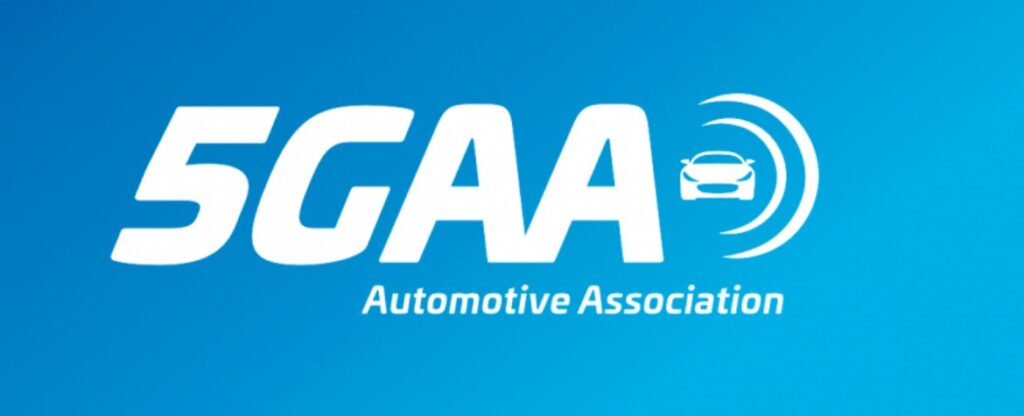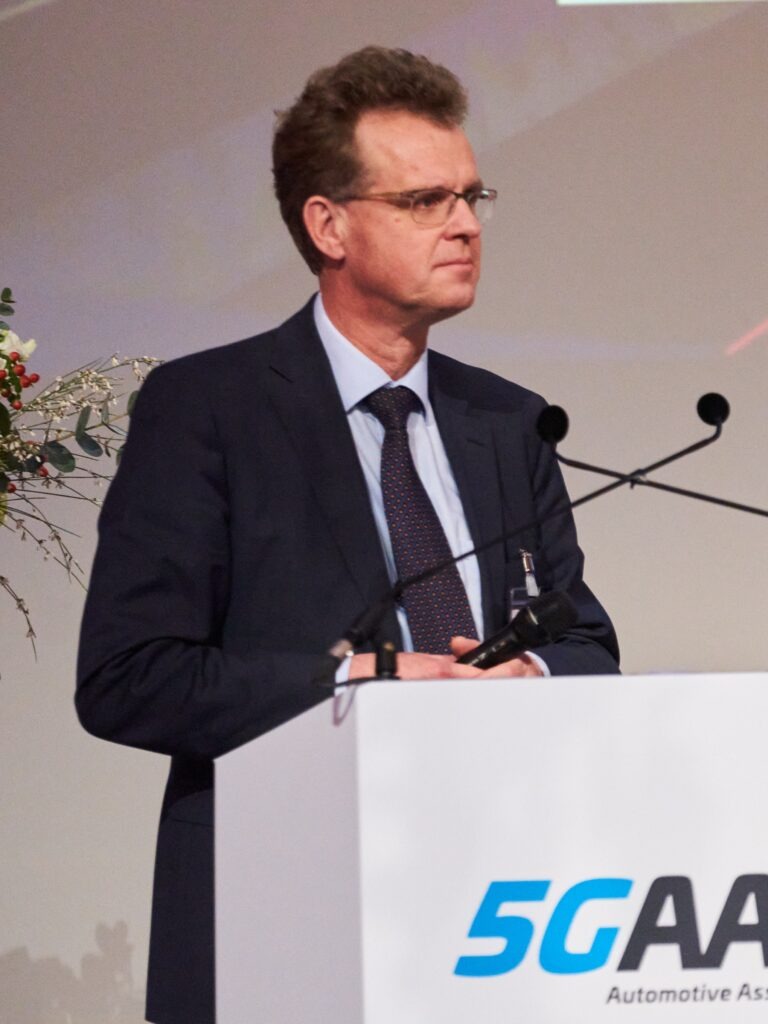Connected car deployment will ensure more road safety and better traffic efficiency. By 2025, 20% of connected cars will be 5G-ready
Automatic driving is the highest ambition for the automotive industry. Developments in technologies that can change the way cars drive have been underway for more than a decade, but there is still a long way to go, and one of the most feasible goals, almost within reach in some ways, is the connected car. To find out how it will work and what it will enable in terms of road safety, traffic management, environmental impact and driving systems, we interviewed Johannes Springer, managing director of the 5G Automotive Association (5GAA). The global, cross-industry organisation with more than 120 members consisting of the world’s leading automotive manufacturers, Tier-1 suppliers, mobile operators, semiconductor companies and test equipment providers, which aims to define and develop the next generation of connected mobility, automated vehicles and intelligent transport solutions based on C-V2X.
What are your plans to standardize V2X standards between Europe, China and the US?
Although our objectives include the standardization of cellular technology-based communications solutions, we support it via a partnership with 3GPP – the global telecommunications standardisation body made of reference organisation partners across the world. Technically, 5GAA promotes one single vehicle connectivity solution based on cellular vehicle-to-everything (C-V2X) standard family, which combines mobile network communications and direct communications, initially based on LTE and now on 5G standards. We are using existing ITS protocol standards, and have also regular liaison with relevant standardisation bodies for the standardisation of specific regional upper layer communication stacks (e.g. ETSI in Europe, SAE in US, or C-SAE in China).
What are the differences between protocols and security solutions contracted with Chinese governments and companies versus those in Europe and the US?
The security of vehicle-to-everything (V2X) communications is handled at all levels of communication between applications and is designed to be the same for all technologies, favouring none. At the 5G Automotive Association, we have not focused on the security of the underlying communication technology and would redirect any questions on security to 3GPP for 4G/5G. But to keep it simple, the difference lies between how messages are sent, via direct communications which requires the implementation of a specific Security Credential Management System or via mobile network, with e2e security between the communication entities.
The semiconductor crisis is creating great difficulties for the automotive industry. Have there been and are there and will there be further impacts on 5GAA work and projects?
It is undisputable that the semiconductor crisis is greatly impacting our members, as these components are the cornerstone on which automotive platforms powering vehicle-to-everything communications are based. That being said, 5GAA work per say has not been affected as we, as an association, are not involved into production or strictly commercial aspects but rather trying to collectively define, test and promote V2X connectivity and address technical, regulatory or high-level go-to-market challenges. Because 5GAA works on standard solutions globally available and in use, these are the fundament for using standard equipment, incl. the relevant semiconductors and chipsets, on large scales. In this regard, 5GAA contributes to reduce complexity in the supply chain, which makes the life for the procurement departments a bit easier.
Are there any estimates on the number of 5G-powered vehicles coming to the European market in the 2022-2023 biennium? And over the next 5 years how many might arrive?
In the next 2 to 3 years, we expect to see mass deployment of V2X use cases geared towards improving traffic efficiency and road safety around the world based on LTE-V2X and 5G more information can be found in our visionary 2030 C-V2X roadmap. Today, we have close to 200 million vehicles connected via cellular networks. We expect advanced use cases based on 5G-V2X, enabling advanced safety and automated driving, to be widely deployed as of 2025 globally. In Europe, market analysts foresee that by 2025 one out of five connected cars sold to be 5G-ready.

Is it fair to say that BMW and Ford, along with some Chinese manufacturers, are theautomakers most interested in investing in 5G-powered cars?
I know that all carmakers are exploring the potential of 5G for connected driving. It is true that Ford announced C-V2X deployment in all new US vehicles as of 2022 and BMW was the first premium carmaker to bring 5G to a globally available production vehicle in 2021. But many other manufacturers have also made similar public announcements e.g. Audi is adding 5G and C-V2X to production models starting with China (other markets expected to follow in 2023), General Motors will roll-out 5G connectivity in US “select model year 2024 vehicles”, etc. Beyond individual announcements, what matters most is the truly global collaboration we see within the supply chain. Our membership reflects this reality by uniting 120+ members working together on all aspects of C-V2X and 5G.
Shifting the analysis to countries, which markets are most at the forefront with the development of V2X technology?
Without a doubt, China has an important and quite advanced role in the deployment of C-V2X technology. The country is upgrading road infrastructures to allow them to become C-V2X enabled, such as the G5021 Shizhu-Chongqing Highway for example. China is definitely also leading in terms of commercial offering with already more than 15 C-V2X car models commercially available from both local and global carmakers as we speak. In other regions, V2X is boosted by using the mobile networks and creating commercial data exchange platforms, such as HERE. So, in all regions around the globe V2X use cases are stimulating the market. And of course, the customer is expecting these innovations, because information access and V2X service availability everywhere and anytime is becoming a must have feature.
Could you give us practical examples of how V2X technology provides greater traffic efficiency and reduced environmental impact?
We chose to conduct an independent study to deep dive into the environmental benefits of V2X communication based on existing technology, but also leveraging more advanced features. The answer was in the wide-deployment of the technology as whenever a use case impacts safety, it also has a positive impact on congestion and emissions, but also new eco-friendly use-cases. By that, we mean services helping to avoid stops and reduce driving dynamics of individual vehicles (e.g. green lights coordination, cooperative adaptive cruise control) or services helping to optimise traffic flows (such as eco-routing or eco-lanes), leading to smoother traffic and emission reduction. The highest emission reduction potential was found in an “everything is connected to everything” scenario where each part of a trip is optimised – from eco-driving advice in low-density traffic to merging assistance in high-density traffic.

In addition to 5G-powered vehicles, spreading technological innovations requires advancing the entire ecosystem. With this in mind, what are the needs and how should road operators go about developing digital infrastructure?
Two key notions would be future-proof investments and appropriate cooperation models. Concretely, road operators acknowledge the need to digitalise their road infrastructure to achieve a safer, greener mobility. It is must-have for both basic safety use cases but even more so if we want to successfully deploy advanced safety and automated driving services. C-V2X technology offers not only a technical solution for today but also a future-proof solution with 5G as we shift towards fully automated driving. However, this cannot happen indeed without good cooperation between the main ecosystem players: road operators, vehicle manufacturers and communication service providers (including mobile network operators). A more integrated model must be found given that each party has its own set of requirements, that must be met to trigger deployment (as per the respective business model).
Not to forget: there are also other traffic participants on the road. So, to integrate also pedestrians, cylists, motorcycles and others into the ecosystem creates really an efficient traffic, making sure that all modes of transportation are operating in an integrative way.
Still on the subject of smart roads and the economic efforts it takes to make them happen, in the early stages we will see a differentiation between A roads (the highways and some of the busiest streets in the richest countries) and B roads. Is there a risk that this difference will be maintained over time, even considering the difficulties of transforming more complex roads?
Any new technology roll-out always starts where the business case is the most favourable, but as we have seen with previous generations of mobile networks, over time, coverage expands. Today 4G is almost universal reaching 99.7% of populated areas in Europe (and 98.6% still in rural areas) according to the European Commission. Note that not all roads may have the same connectivity needs, depending on traffic flows, etc. But in case of clear market failure, a number of mechanisms can be triggered by governments to remedy the situation ranging from incentives, co-funding, sharing of public infrastructure, to road coverage obligations (but these should always be linked to appropriate policy measures to ensure cost-efficiency in uneconomic areas). What is also important: investments into mobile networks are not driven by only one class of vertical use cases, such as automotive. There are many other industries relying on the availability and appropriate functioning of mobile networks, such as agriculture, logistics, drones and many more.
In terms of road safety, will the ambition to reduce road fatalities to zero remain a utopia or can technology achieve this enormous goal in the future?
The ambition is there of course, and we are working towards maximum safety. The broader implementation and commercialisation of V2X technology and the many safety-related use cases it will enable will help us get close to that goal. And the more technology evolves, the more benefits these services will bring. But there are many challenges on the way still, e.g. how to integrate vulnerable road users or the legacy fleet in a holistic model that provides improved safety for all. A possible solution that we are working on is to leverage smartphone-and consumer electronics based applications.

What is the time horizon within which we might see connected cars on a large scale?
Connected cars are already on the roads – over 200 million worldwide. The difference lies in the type of connectivity we are referring to. So far, most connected cars deployed have been relying on LTE mobile network communications, except for a few VW models using a Wi-Fi derivative known as DSRC or ITS-G5 since 1 year. We can expect that every new car will be equipped with LTE and some with also 5G in the upcoming year. BMW, Daimler, Audi, Ford, and others are equipping 100% of their new produced vehicles with at least 4G. What we see now are the first 5G-equipped models (based on 3GPP Release 15), such as the BMW iNext, hitting the market. China is the first country that has fully enabled C-V2X vehicles commercially available, that is including also direct communications, but US should follow shortly as per Ford’s announcement. These vehicles however still rely on LTE-V2X (3GPP Release 14) for direct communications. This because the 5G-V2X standard for direct communications (3GPP Release 16) was only completed mid-2020 so the development of the commercial products is still on-going. As indicated in our roadmap, we expect however the next generation of 5G-V2X fully enabled vehicles (with both direct and mobile network communications) to be widely deployed as of 2025.
Finally, could you take stock of the work done five years after the founding of the 5GAA, considering which of the objectives have been achieved?
As we celebrate the 5th Anniversary of our Association, I am proud to this the results we have achieved – starting from 8 founding members to over 120 companies from the whole automotive and telecoms value chain. Bridging these two industries have been synonymous of enhanced collaboration between companies to push the technology forward and offer a platform for members to discuss and develop partnerships to make C-V2X technology on roads a reality. This is regularly shown through the numerous plug fests and live demonstrations we organise several times a year. These activities have been impacted by Covid unfortunately, but we hope to get back to full speed as soon as possible. We have also managed to secure many partnerships with Standards Development Organisations and public authorities, and voiced our position on global deployment agendas.

